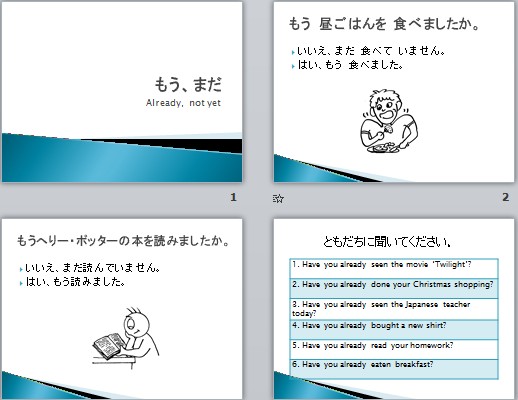

There are also several non-verbal ways to express “no.” Rubbing the back of the neck, making an “X” with both arms or even taking in a deep breath all mean “no.” This is the no-nonsense way to say “no.” However, Japanese culture prefers less direct approaches. This literally means “That’s good!” and as such can be used to show your approval of something. They don’t have a strict “definition,” but are similar to saying “uh-huh” or “mm-hm” in English. The Japanese use aizuchi ( 相槌 ), which are simple words or gestures that all mean “yes,” to indicate you’re listening. However, the hai is implied and you can leave it off. You can also say hai, sou desu ( はい ,そうです ) - Yes, that’s right. These are less formal, but generally acceptable and certainly not rude. You can also use soka そっか, soudane そうだね or soune そうね for variety. Saying this while nodding is a polite way to show that you’re paying attention when someone tells you something new. Nihongo de hanashimashou: 日本語で話しましょう - Let’s talk in Japanese Saying Yes and NoĪnother way to say “yes” is with non-verbal cues like nodding your head up and down or giving a thumbs up.
#MOU JAPANESE PLUS#
This plus a number is all you need to tell the time! For example: In casual situations, saying Ima nanji? ( 今何時 ) will work just fine.

Ima nanji desu ka?: 今何時ですか? - What time is it? The main difference is that takusan can function as a noun, adjective or adverb, while ooi is only an adjective. In more casual conversation, you can also say just dame ( だめ ) or dame da ( だめ だ). Suki dewa arimasen: 好きではありません - I don’t like it You’ll often also hear ii yo ( いいよ ), especially from women/girls. You can say what you like by adding … ga suki desu ( が好きです ).
#MOU JAPANESE HOW TO#
If you don’t know how to say your country’s name, say it in English-chances are, people will understand where you mean. Many others are almost identical in Japanese, such as: Amerika ( アメリカ ) - United States of America.Here’s a list of some countries in Japanese: Simply use this to describe what country you’re from. Watashi wa … karakimashita: 私は… から来ました - I’m from … You also use this to say your name:īut this sentence pattern can also be used for any adjectives. This is a longer version of the previous phrase. Atsui desu ( 暑い です ) - It’s hot/I’m hot.It’s easiest to think of desu like the English word “to be.” Unlike “to be,” desu stays the same regardless of the subject.


The more informal version is O namae wa? ( おなまえは? ) - Your name is…? This is a polite way to ask someone for their name. O namae wa nan desu ka?: お名前は何ですか? - What’s your name? Hisashiburi: 久しぶり - It’s been a while Basic Conversation Konnichiwa can be used any time of day as a general greeting, but it’s most commonly used between 11 a.m. Konnichiwa: こんにちは - Hello / good afternoon In a workplace, someone greeting a colleague for the first time that day might use this phrase even if the clock reads 7 p.m. Ohayou gozaimasu: おはようございます - Good morning
#MOU JAPANESE PDF#
This blog post is available as a convenient and portable PDF that youĬlick here to get a copy. The rest will follow.Īnd you can just click on a word or phrase to hear its pronunciation. The Japanese language might take years to master, but what if you need to get through a conversation right now? Start by learning these everyday conversational words and crucial survival phrases. With these 250 essential Japanese words and phrases, you’ll be prepared for any situation. Ma250 Essential Japanese Words and Phrases to Rock Any Situation


 0 kommentar(er)
0 kommentar(er)
